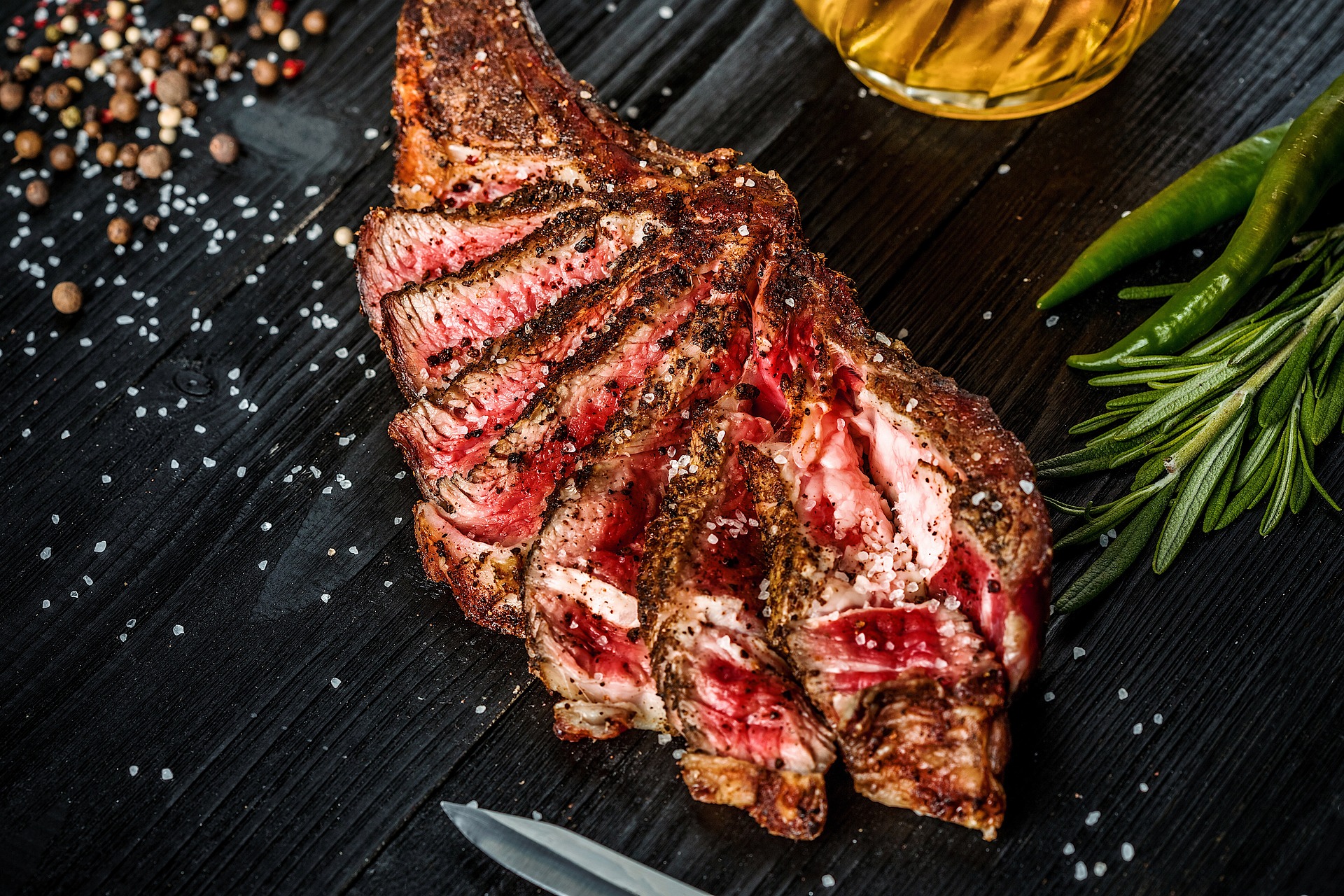
There’s a reason upscale steakhouses can get away with charging upwards of $100 for a great steak. No, it’s not the ambiance, the overpriced apps or the impressive wine list – though these are all delicious reasons to dine out. It’s because the chef in the kitchen knows how to do steak right. Of course, this includes the cooking process itself, but the arguably more important skill is knowing how to season that steak for which you’re about to pay a pretty penny. So, how can you recreate this steakhouse flavor at home? It’s easier than you think.
Benefits of seasoning steak
Of course, seasoning steak gives it flavor. This one is obvious. A good spice rub is comprised of the perfect blend of herbs and spices to flavor your steak and adapts it to any flavor profile you have in mind for your menu. Spices not only season a steak with their own unique flavors, but help the steak itself to shine in all its meaty glory. Salt particularly has the magical culinary ability to make food taste more like itself, allowing the diner to enjoy all of steak’s meaty, juicy, natural flavors for what they were meant to be.
Seasoning properly doesn’t just add flavor to steak, though. One of the hidden benefits of steak seasoning is its power to tenderize. Salt – the key ingredient in steak rub recipes – draws moisture from the meat, which is known as dry brining. A dry brine is designed to tenderize steak by drying out the surface of the meat, locking moisture inside and creating a tender, juicy center.
How to season steak

When seasoning your steak, timing is crucial. The process of dry brining takes about 45 minutes when done properly. Many recipes found online will only call for about 15-20 minutes, but we recommend not rushing this process for the juiciest, most tender and delicious steak possible. Great steaks take time, they’re so worth the extra effort.
When you’re ready to season, brush all sides of your steak with a neutral oil with a high smoke point like vegetable or canola. Unless you’re cooking your steak over low heat (something we definitely wouldn’t recommend), oils like olive and flaxseed will have a tendency to burn and create a bitter flavor, undoing all your hard work.
After brushing the steak with oil, season generously on all sides and set aside to rest.
How much seasoning should you use?

If you’re a cook who loves a distinct, black-and-white, perfectly measured recipe, the phrase “season generously” might frustrate you. The same is true for “season to taste,” which is another commonly used term in recipes. Both of these terms are extremely common when referring to steak seasoning for several reasons. Firstly, as with all things, everyone has different preferences when it comes to seasoning. Steaks are also not uniform in size, shape, or weight, so giving a precise measurement for steak seasoning is all but impossible. But all hope is not lost for those who need a more solid guideline.
Generally, about one and a half teaspoons of Kosher salt per pound of boneless steak is the standard, and about half as much pepper.
Within this perimeter, steak seasoning greatly depends on the thickness of the cut of meat. Spice rubs can only sit on the outside, leaving the center of the steak to fend for itself. Because of this, thicker steaks need more seasoning, as there is simply more meat to penetrate and flavor. Thicker cuts like ribeye and filet mignon will need more seasoning than cuts like flat iron or flank.
A good rule of thumb is to make sure the entire steak is coated in seasoning but shaken afterward to remove any excess spices that may over-season or burn the steak when it comes time to cook.
Which spices are best for steak?

When it comes to seasoning steak, there is one rule that you must never, ever break – do not use table salt. Kosher salt is the only acceptable choice when cooking anything, but steak especially. The larger granules and crystal-like shape of Kosher salt allow for optimum absorption in your steak’s dry brine. Kosher salt also doesn’t come with any chemical additives that will add an unappetizing, metallic taste to your otherwise delicious steak.
As long as you follow the salt rule, feel free to have fun and be creative with your steak rub ingredients. Of course, the dish you’re making should affect the flavors you choose. If you’re making a Mexican-inspired dish like fajitas, ingredients like cumin and chili powder are delicious additions. If you’re making an Asian dish, ground ginger is also wonderful. Use your recipe and other dishes you’ll be serving as flavor inspiration.
Steak seasoning recipe

As we’ve already stated, it’s important to be creative with your spice blends, depending on your dish. If what you’re looking for, though, is just a good, old-fashioned, deliciously traditional yet exquisitely savory steak rub, we recommend our recipe.
Ingredients
- 2 tablespoons Kosher salt
- 2 tablespoons freshly ground black pepper
- 2 tablespoons garlic powder
- 2 tablespoon onion powder
- 2 tablespoons smoked paprika
- 2 teaspoons dried rosemary
- 2 teaspoons dried thyme
Method
- In a small bowl, mix ingredients together until well combined.
- Store in a sealed glass jar in a cool, dark place.




